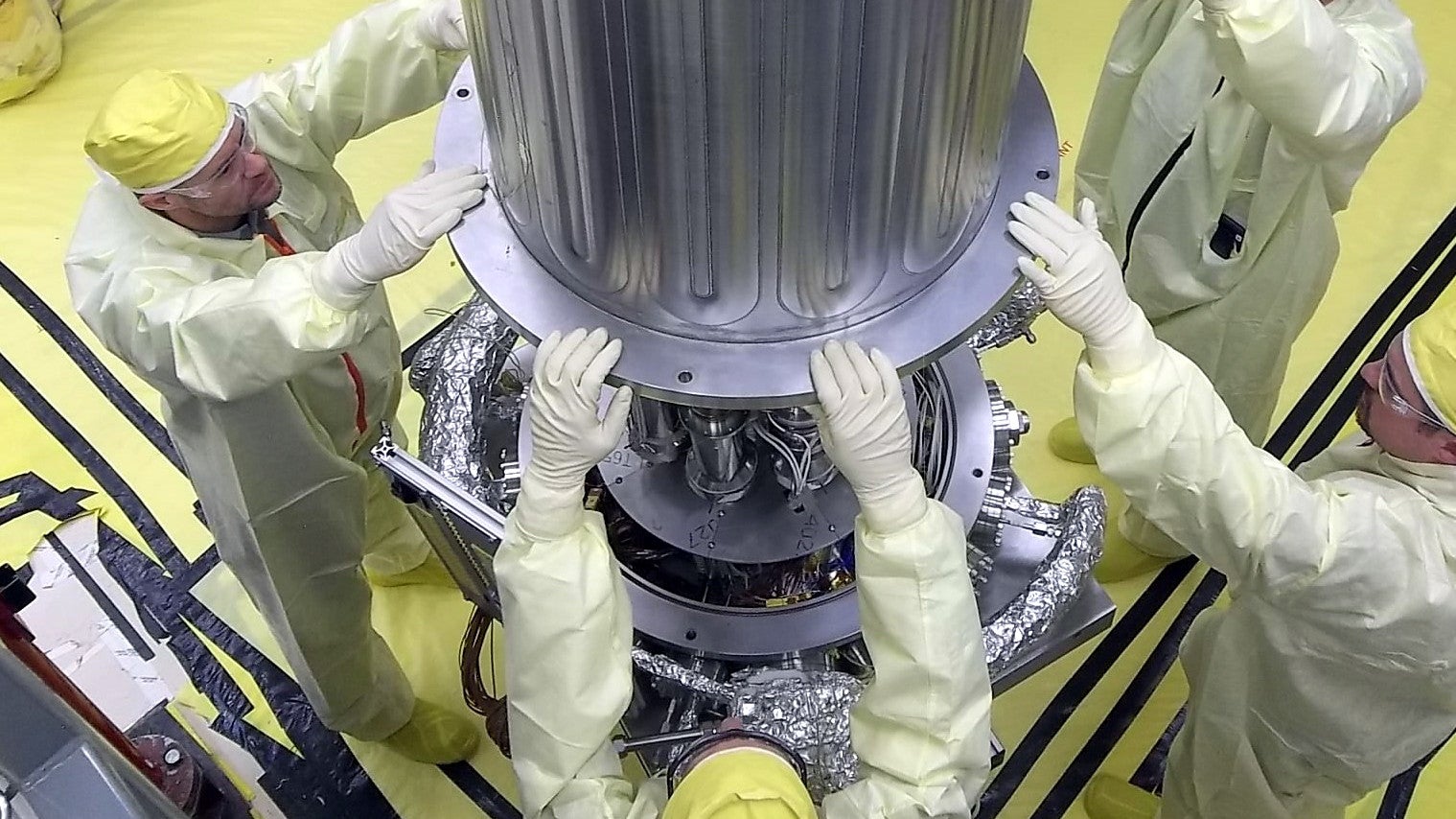NASA successfully tested a nuclear reactor that works in space
If space is an ocean, the International Space Station is a raft tethered to the shore. The moon is a nearby island that we’ve visited briefly. To go any further or stay any longer, humanity needs more power.


If space is an ocean, the International Space Station is a raft tethered to the shore. The moon is a nearby island that we’ve visited briefly. To go any further or stay any longer, humanity needs more power.
Now, NASA may have the source: A tiny nuclear reactor called KRUSTY, for Kilopower Reactor Using Stirling Technology. (If you’re wondering if this is may be a reference to a popular animated series, its predecessor was known as DUFF).
The reactor uses nuclear fission—the energy released by splitting uranium-235 in a reactor core about the size of a paper towel— to produce 10 kilowatts of power for about ten years, which NASA says is enough energy to power several houses. Four of the reactors could power an outpost on the lunar surface.
Nuclear energy sources can be controversial because of the deadly radioactivity they can emit in accidents or malfunctions. Yet they remain the most efficient, light-weight source of long-lasting energy, which counts for a lot when you’re paying tens of thousands of dollars per kilogram of mass brought into space.
While long-running satellites use radioactive isotopes to generate power without nuclear fission, solar panels and batteries are the most common way of generating power in space. However, the energy needs required to keep humans alive far outstrip those of robotic explorers. Keeping humans at the right temperature in the vacuum of space, while providing them with air to breathe and water to drink, takes a great deal of energy. And then there’s the work humans might do in space, like mining ice and converting it into hydrogen and oxygen.
Besides demonstrating their small reactor could produce power, the NASA researchers put it through stress tests to ensure that it would operate safely even if systems failed or astronauts had to shut it down.
There are no immediate plans to send KRUSTY into space for now, but if a version ever leaves earth’s surface, it won’t be the first nuclear reactor in space.
There are dozens still in orbit thanks to experiments with nuclear powered satellites during the Cold War space race. The US launched one that remains in orbit, while the Soviets launched dozens; none of them were powerful enough to generate the energy needed for long-term space habitation. One of these fell to earth in far northern Canada, resulting in radioactive contamination and an expensive settlement, while another released a cloud of nuclear liquid that still floats in orbit.
Besides powering the infrastructure of human space survival, some forward-thinking engineers believe that nuclear energy is the only way to make a rocket engine powerful enough to efficiently explore the solar system. The US tested systems until 1975, before we understood just how deadly nuclear tests were to the civilian population. NASA did non-nuclear tests of such propulsion systems as recently as 2013, but since rocket engines tend to explode at least once during testing, the nuclear version will likely have to wait until humans have enough experience in space to develop them there.